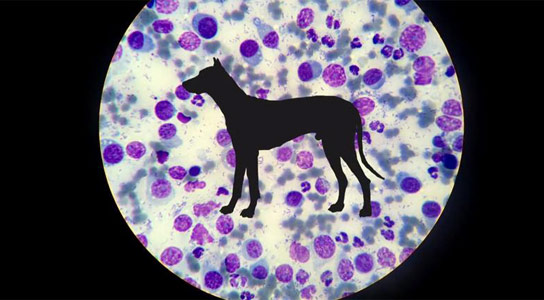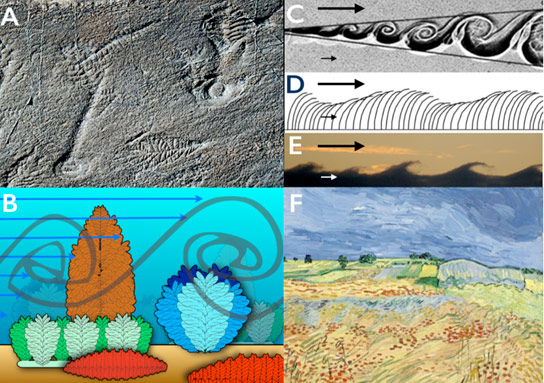Mass
strandings of whales have puzzled people since Aristotle. Modern-day
strandings can be investigated and their causes, often human-related,
identified. Events that happened millions of years ago, however, are far
harder to analyze -- frequently leaving their cause a mystery. A team
of Smithsonian and Chilean scientists examined a large fossil site of
ancient marine mammal skeletons in the Atacama Desert of Northern Chile
-- the first definitive example of repeated mass strandings of marine
mammals in the fossil record. The site reflected four distinct
strandings over time, indicating a repeated and similar cause: toxic
algae. The team's findings will be published Feb. 26 in the Proceedings of the Royal Society B.
The
site was first discovered during an expansion project of the
Pan-American Highway in 2010. The following year, paleontologists from
the Smithsonian and Chile examined the fossils, dating 6-9 million years
ago, and recorded what remained before the site was paved over.
The
team documented the remains of 10 kinds of marine vertebrates from the
site, named Cerro Ballena -- Spanish for "whale hill." In addition to
the skeletons of the more than 40 large baleen whales that dominated the
site, the team documented the remains of a species of sperm whale and a
walrus-like whale, both of which are now extinct. They also found
skeletons of billfishes, seals and aquatic sloths.
What intrigued
the team most, however, was how the skeletons were arranged. The
skeletons were preserved in four separate levels, pointing to a repeated
and similar underlying cause. The skeletons' orientation and condition
indicated that the animals died at sea, prior to burial on a tidal flat.
Effects of Toxic Algae
Today,
toxins from harmful algal blooms, such as red tides, are one of the
prevalent causes for repeated mass strandings that include a wide
variety of large marine animals.
"There are a few compelling
modern examples that provide excellent analogs for the patterns we
observed at Cerro Ballena -- in particular, one case from the late 1980s
when more than a dozen humpback whales washed ashore near Cape Cod,
with no signs of trauma, but sickened by mackerel loaded with toxins
from red tides," said Nicholas Pyenson, paleontologist at the
Smithsonian's National Museum of Natural History and lead author of the
research. "Harmful algal blooms in the modern world can strike a variety
of marine mammals and large predatory fish. The key for us was its
repetitive nature at Cerro Ballena: no other plausible explanation in
the modern world would be recurring, except for toxic algae, which can
recur if the conditions are right."
Harmful algal blooms are
common along the coasts of continents; they are enhanced by vital
nutrients, such as iron, released during erosion and carried by rivers
flowing into the ocean. Because the Andes of South America are
iron-rich, the runoff that has occurred along the west coast of South
America for more than 20 million years has long provided the ideal
conditions for harmful algal blooms to form.
From their research,
the scientists conclude that toxins generated by harmful algal blooms
most likely poisoned many ocean-going vertebrates near Cerro Ballena in
the late Miocene (5-11 million years ago) through ingestion of
contaminated prey or inhalation, causing relatively rapid death at sea.
Their carcasses then floated toward the coast, where they were washed
into a tidal flat by waves. Once stranded on the tidal flat, the dead or
dying animals were protected from marine scavengers, and there were no
large-land scavengers in South America at this time. Eventually, the
carcasses were buried by sand. Because there are four layers at Cerro
Ballena, this pathway from sea to land occurred four different times
during a period of 10,000 to 16,000 years in the same area.
"Cerro
Ballena is the densest site for individual fossil whales and other
extinct marine mammals in entire world, putting it on par with the La
Brea Tar Pits or Dinosaur National Monument in the U.S.," Pyenson said.
"The site preserves marine predators that are familiar to modern eyes,
like large whales and seals. However, it also preserves extinct and
bizarre marine mammals, including walrus-like whales and aquatic sloths.
In this way, the site is an amazing and rare snapshot of ancient marine
ecosystems along the coast of South America."
3-D Technology at Cerro Ballena
Because
the site was soon to be covered by the Pan-American Highway, time was
very limited for the researchers. A major solution came in the form of
3-D technology. Pyenson brought a team of Smithsonian 3-D imaging
experts to Chile, who spent a week scanning the entire dig site.
Although
all the fossils found from 2010 to 2013 have been moved to museums in
the Chilean cities of Caldera and Santiago, the Smithsonian has archived
the digital data, including the 3-D scans, from the site at
cerroballena.si.edu.
There, anyone can download or interact with 3-D models of the fossil
whale skeletons, scan Google Earth maps of the excavation quarries, look
at a vast collection of high-resolution field photos and videos or take
360-degree tours of the site.
The enormous wealth of fossils
that the team examined represents only a fraction of the potential at
Cerro Ballena, which remains unexcavated. The scientists conservatively
estimate that the entire area preserves several hundred fossil marine
mammal skeletons, awaiting discovery. Pyenson's colleagues at the
Universidad de Chile in Santiago are actively working to create a
research station near the fossils of Cerro Ballena so that those that
have been collected and those still covered by sediments can be
protected for posterity.














 PHOTOS
PHOTOS




















